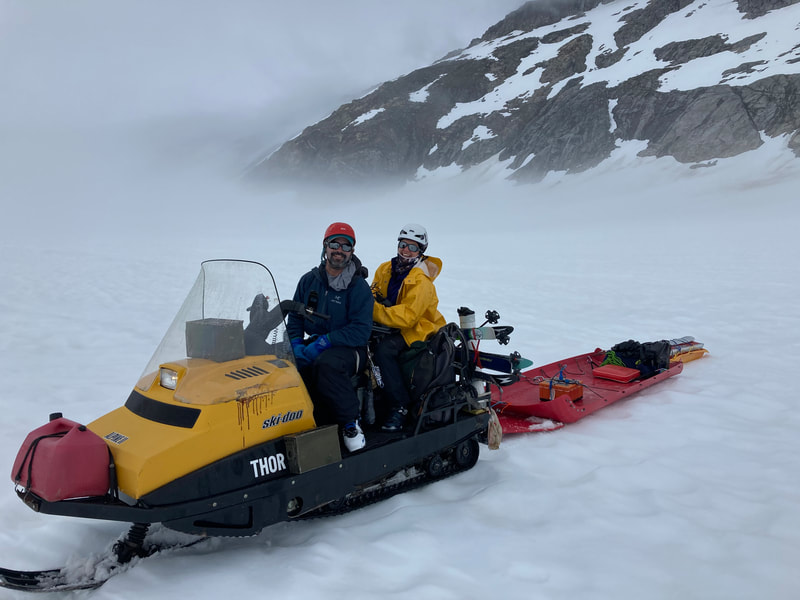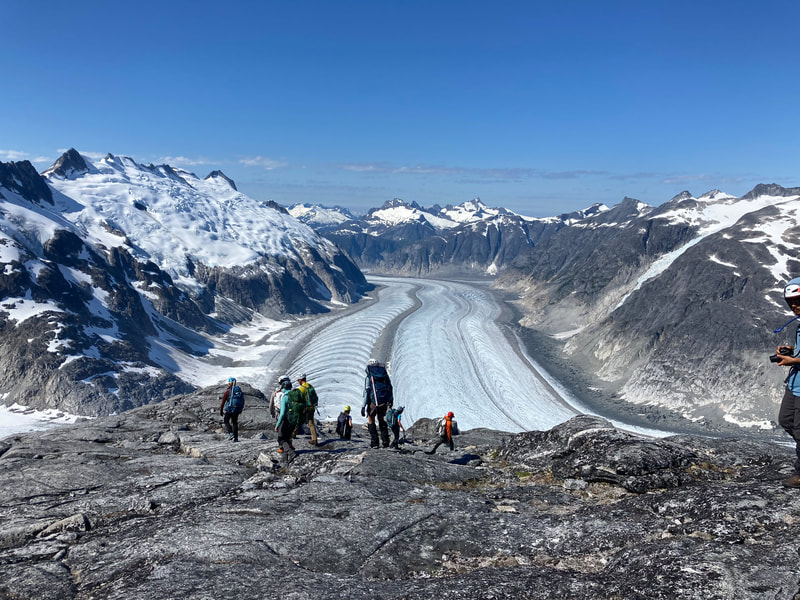PROJECTS
International Thwaites Glacier Collaboration - Our team, is part of an international effort to uncover how much ice and how fast it is melting in the Amundsen Sea Embayment, Antarctica. The large Thwaites and Pine Island glaciers are thought to be the "weak underbelly of the West Antarctic Ice Sheet". If both were to collapse, sea levels could rise by several feet and trigger a larger retreat of the West Antarctic Ice Sheet as a whole. We have completed two field seasons (2019, 2020) and will return to the region in 2023. Stay tuned for updates! During out first field season in 2019, we traveled aboard the US icebreaker, Nathaniel B. Palmer, to several islands just off the coast of Thwaites Glacier. We sampled raised beaches for organic material that we used to reveal the relative sea-level history of the region during the past 5000 years. This research provides important information about the local ice history and whether or not the present-day rapid retreat of Thwaites Glacier is unprecedented.
Check our publication in Nature Geoscience (here) and Annals of Glaciology (here) and click below to learn more about the overall effort!
Check our publication in Nature Geoscience (here) and Annals of Glaciology (here) and click below to learn more about the overall effort!
Southern Patagonian Icefield Project - In collaboration with CONAF & Round River Conservation Studies, we are visiting tidewater glaciers of the Southern Patagonian Icefield to uncover what is driving their retreat as these glaciers are influenced by both a warming ocean and atmosphere. This research is linked with on-going research in Bernard O' Higgins National Park to understand the role the retreating icefield has on the flora and fauna of the land and ocean.
Juneau Icefield Research Program - I have worked with the Juneau Icefield Research Program (JIRP) for over 10 years in a number of roles including student, staff, and research/teaching faculty. My focus on the icefield has been to collect ground-penetrating radar surveys across hundreds of kms to image annual snow layers and firn thickness. in 2012 and 2021.
PREVIOUS PROJECTS
Glaciation of high-altitude Andes, Peru Implications for Paleoclimate and Paleoindian-Age People
In 2013, our team aimed to use glacial geology to address how glaciers behaved during the Terminal Pleistocene in the tropical Andes and how the impacts of ice-marginal fluctuations may have influenced human-environment interactions in southern Peru.
In 2013, our team aimed to use glacial geology to address how glaciers behaved during the Terminal Pleistocene in the tropical Andes and how the impacts of ice-marginal fluctuations may have influenced human-environment interactions in southern Peru.
Reconstructing sea-surface temperatures in McMurdo Sound, Antarctica
In 2013&14, we measured oxygen isotopes from Adamussium colbecki, a small mollusk species, to reconstruct water temperatures for the last 3,000 years. The shells of this species records the temperature of the water in which it grows. We collected shells that date from present to thousands of years old from raised marine deposits to use in the creation of this reconstruction.
In 2013&14, we measured oxygen isotopes from Adamussium colbecki, a small mollusk species, to reconstruct water temperatures for the last 3,000 years. The shells of this species records the temperature of the water in which it grows. We collected shells that date from present to thousands of years old from raised marine deposits to use in the creation of this reconstruction.






